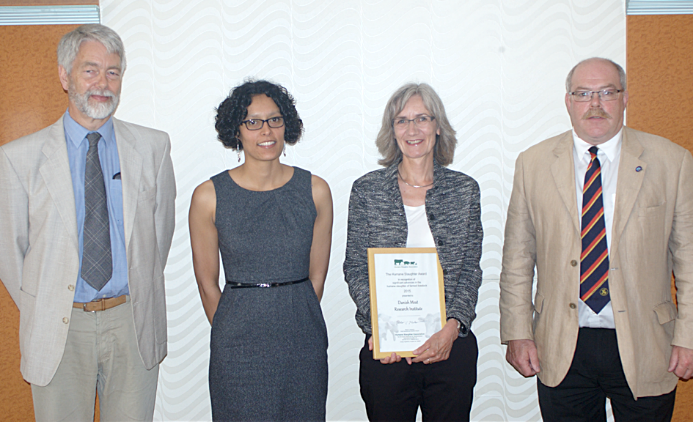Danish Meat Research Institute wins prize

The Danish Meat Research Institute (DMRI) have recently received the Humane Slaughter Award for significant advances that have led to improvements in the humane slaughter of livestock.
Susanne Støier, director at the DMRI said the organisation is ‘very honoured’ to receive the award. She said, “Our work is characterised by the strong combination of insight in animal behaviour, technical knowledge and close cooperation with the slaughterhouses. DMRI advises the meat industry on how to improve animal welfare by implementing new systems and procedures.”
Implementations of results and solutions
Støier continued, “Therefore, the success is not limited to the development of animal friendly systems but also includes the implementation of results and solutions in the meat industry. Good animal welfare is also good business. The equipment developed by DMRI combined with our insight into animal behaviour has not only improved animal welfare but has also significantly improved meat quality, productivity and working conditions.”
Humane Slaughter Association
As an independent registered charity, the HSA works to achieve high worldwide standards in food animal welfare at markets, during transport and at slaughter through scientific and technical advances, education and training.
Several developments have led to the HSA award the Danish institute.
1 – Handling principle for small groups of pigs
In the 1990s, DMRI developed and implemented an animal handling principle based on small groups of about 15 pigs that were kept together all the way from loading on the transport vehicle to the stunner. Pigs are social animals and like to stay together in groups. By using this principle, the stress level of the pigs is significantly reduced compared with traditional systems with large groups.
2 – Transport equipment and traceability
Optimised transport equipment including forced ventilation, anti-slipping flooring etc. as recommended by DMRI has made a more gentle animal transportation possible. To complete the group-based principle, the institute developed and implemented a system by which the required traceability can be maintained even though the pigs are unmarked from the farm supplier, thereby making the present tattoo marking methods unnecessary, as they are associated with some level of stress for the pigs.
Traceability is maintained by keeping the pigs in the same intact group from collection at the farm until they are identified using RFID tags on the slaughter line. The system consists of IT solutions combined with slaughterhouse inspection, trained operators and management focus.
3 – CO2 stunning system
DMRI has patented the group-based CO2 stunning system, and today it is installed in many places around the world. Moreover, in order to reduce the use of force, behavioural pattern based nudging has been included in the lairage systems, e.g. having light in front of the animals and a small elevation angle of the floor in order to incite the groups of pigs to move forward. The improvements are remarkable and can be clearly observed acoustically when visiting the lairage areas. Today, the noise is negligible compared with the old systems where hearing protection was necessary.
4 – VisStick system
Another example of a developed and implemented documentation system is the VisStick. Sticking, i.e. killing, of the pig is a manual process, and there is a minor risk that a pig is not stuck properly. To minimise the risk, we have developed a vision system to verify that the pigs are in fact stuck after stunning. The VisStick system has been implemented at most slaughter lines in Denmark and at a number of plants in other Nordic countries.
Director Susanne Støier of Danish Meat Research Institute at the HSA International Symposium in Zagreb, Croatia, July 2015 where she received the 2015 HSA award for significant advances in humane slaughter on behalf of the Institute.











